Hispano-Suiza Returns to Glory With 1,100-HP, $2 Million Electric Hypercar
The Spanish-made “Carmen” EV can do 0-62 mph in a scorching 2.6 seconds.
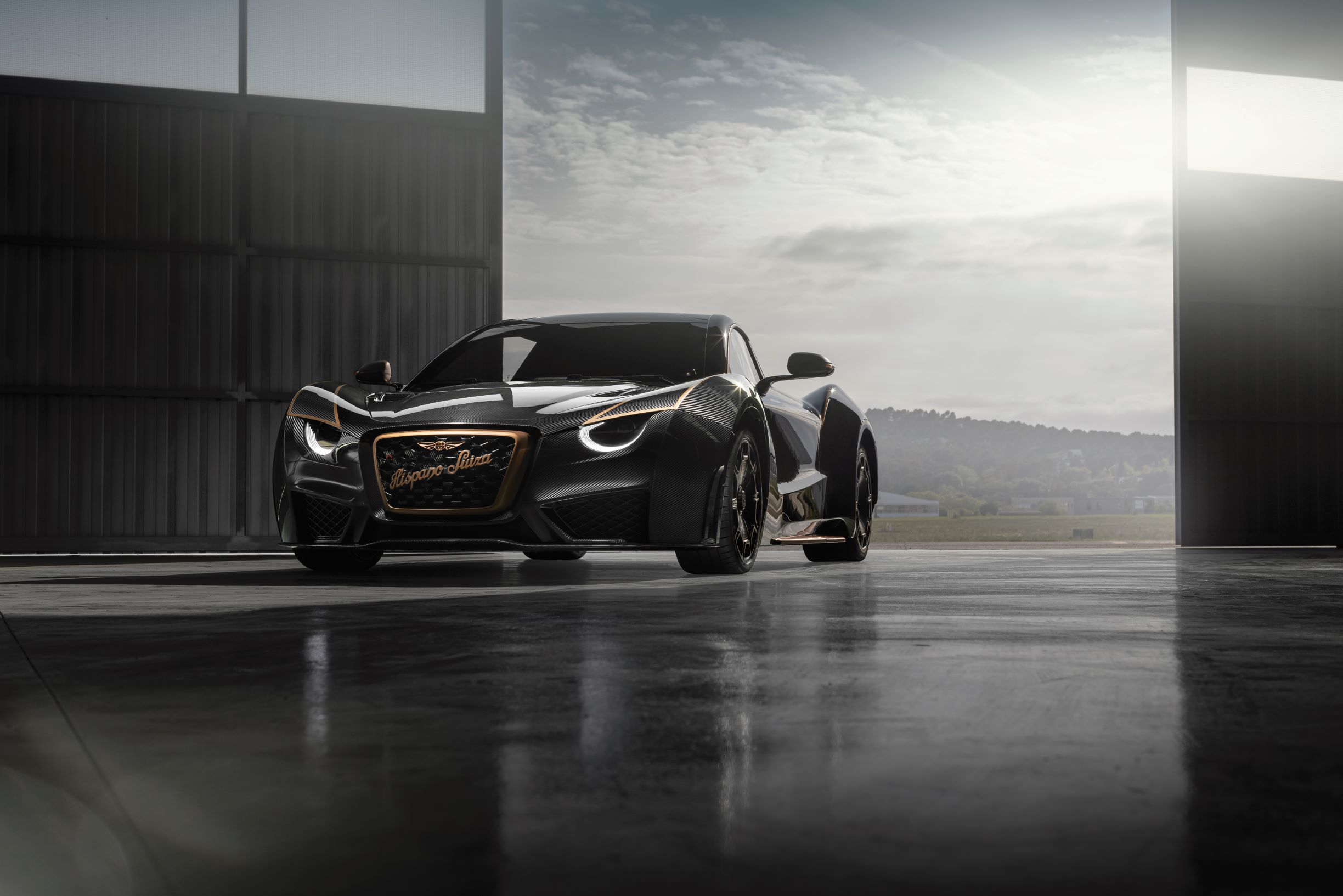
In the sliver of time between the Great Wars, Hispano-Suiza experienced what would be known as its glory years. As the name implies, the company’s foundations are a bi-national partnership between Spanish entrepreneur Damián Mateu and Swiss engineer Marc Birkigt.
Launched on June 14, 1904, only a year into its gestation the firm produced its first car, a relatively modest four-cylinder, and less than a year after that Hispano-Suiza gave birth to its debut six-cylinder vehicle.
The first vehicle of its kind built in Spain, it generated a healthy 75 horsepower and gained international acclaim when the sixer sped across France, completing the route from Perpignan to Paris in a fleet 22 hours.
When the First World War crashed down across Europe, Hispano-Suiza pivoted its engineering prowess to produce aeronautical engines and military equipment, supplying more than 50,000 engines to its motherland’s war efforts.
But perhaps more important than the financial boost was an auspicious sign the war brought, when a French squadron painted a stork emblem on the side of an Hispano-Suiza-powered fighter plane. That elegant stork, its long wings gliding through the air, would soon become the internationally recognized symbol for the luxury marque.
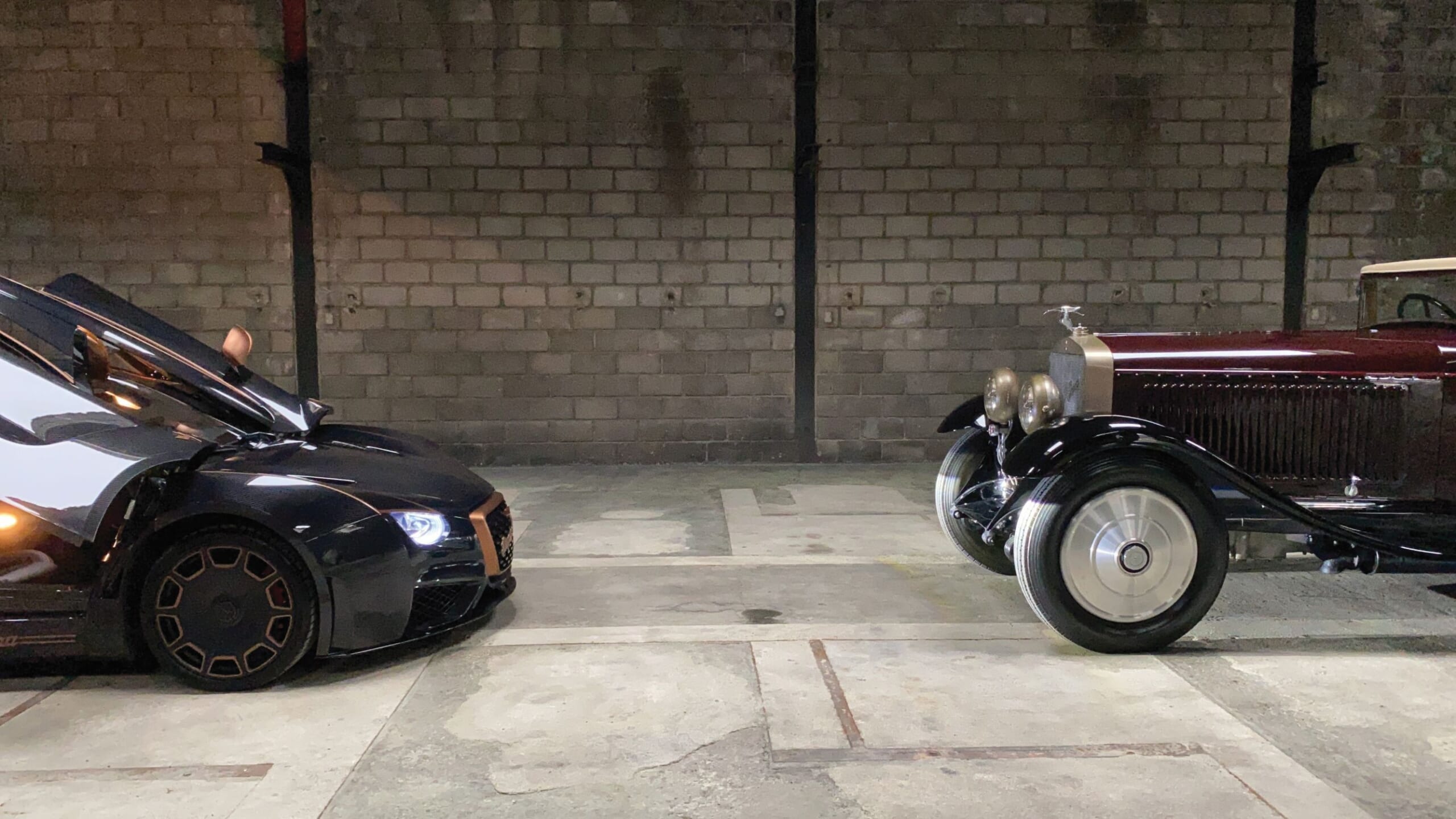
The first Hispano-Suiza to wear the silver stork ornament on its hood was the H6B, a vehicle that became a landmark for the brand. Not only because of its 90-plus mph, six-cylinder powerplant; but moreso what was done with it in 1921 when French racecar driver and all-round renaissance man André Dubonnet endurance-raced it in Boulogne, France, winning the prestigious George Boillot Cup. A rising fan of the marque, His Majesty King Alfonso XIII would also race the gorgeous coupé outside Madrid in the “Cuesta de las Perdices” race.
These were the halcyon years for Hispano-Suiza flush with success, international respect and boasting passionate fans from royalty (Sweden’s Gustavo V, Romania’s Carlos II, and Monaco’s LuisII) to high-wattage superstars (Pablo Picasso and Albert Einstein), to fashion avatars (Coco Chanel and René Lacoste). All told, between the years of 1904 and 1946, Hispano-Suiza would produce some 12,000 cars — among the most bespoke and luxurious rides on the planet.
Sadly, post-WWII Europe’s economic devastation claimed luxury automakers across the continent; as glorious badges like Delage, Bugatti, Horch and Isotta-Fraschini collapsed, so too fell Hispano-Suiza, finally ceasing operations in 1953.
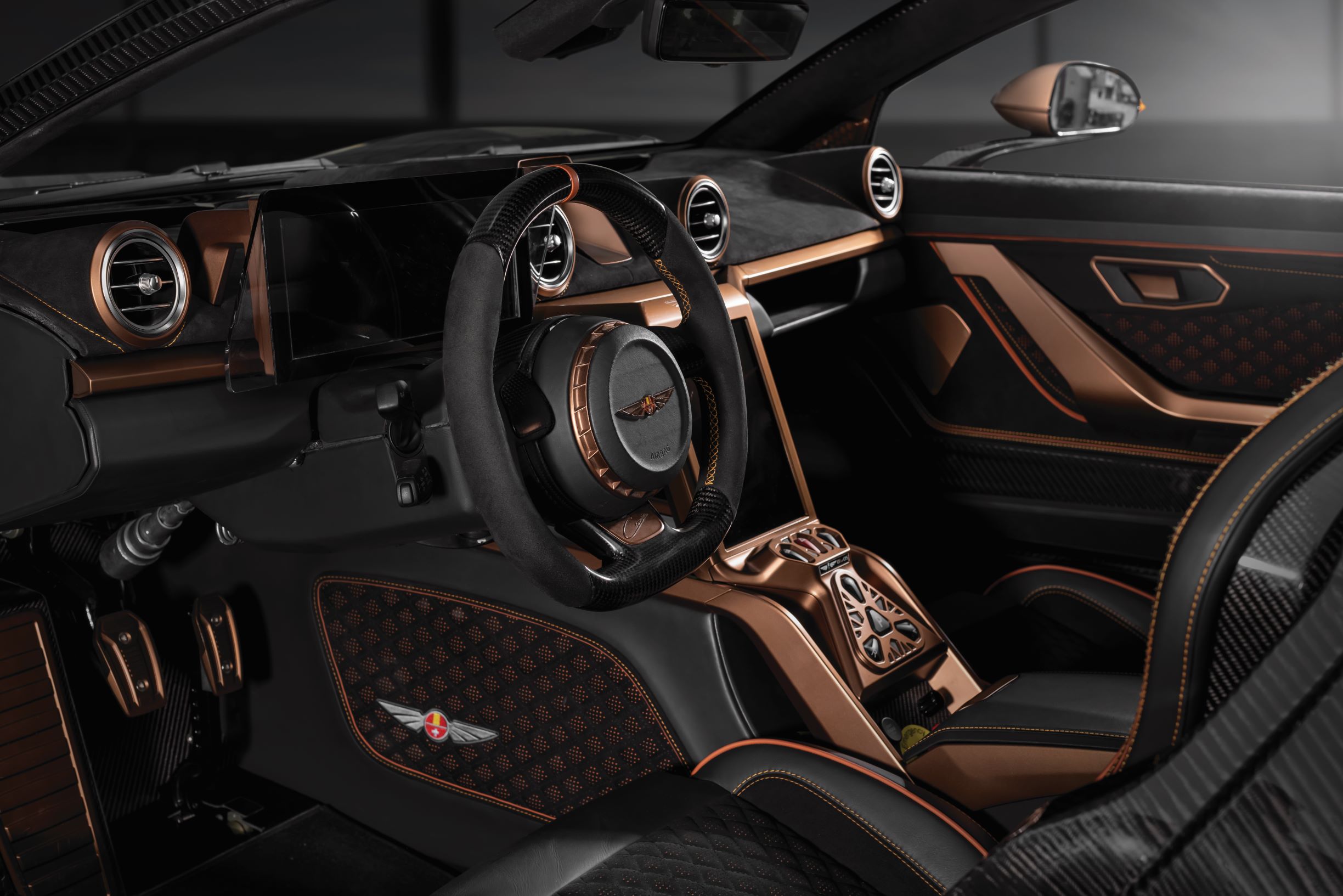
That slumber would last over a half-century until 2019, when attendees at the Geneva International Motor Show would lay eyes upon one of the more unique vehicles in the sprawling hall, the Carmen: a windswept two-seater with the flowing Art Deco lines and covered rear wheels of a pre-War museum piece, yet powered by a futuristic powertrain devoid of pistons or fire.
If the vessel looks simultaneously futuristic while resonating the past, it’s because Lead Designer Francesc Arenas modeled the Carmen after one of Hispano-Suiza’s most iconic vehicles: the 1938 Dubonnet Xenia. That game-changing vehicle is considered among the pantheon of pre-War coupés, incorporating futuristic tech like coilspring independent suspension (designed by the aforementioned André himself), swooping aerodynamic lines, sliding doors, a wraparound windscreen, and beefed up 250-hp 12-cylinder lump.
“Above all the Xenia Dubonnet is a unique and emblematic model of our brand, which also reflects its main values,” explains Arenas of his inspiration. “Its bodywork and architecture seemed to me the ideal starting point from which to work a new Hispano-Suiza that directly-related our past with the present and future of our brand.”
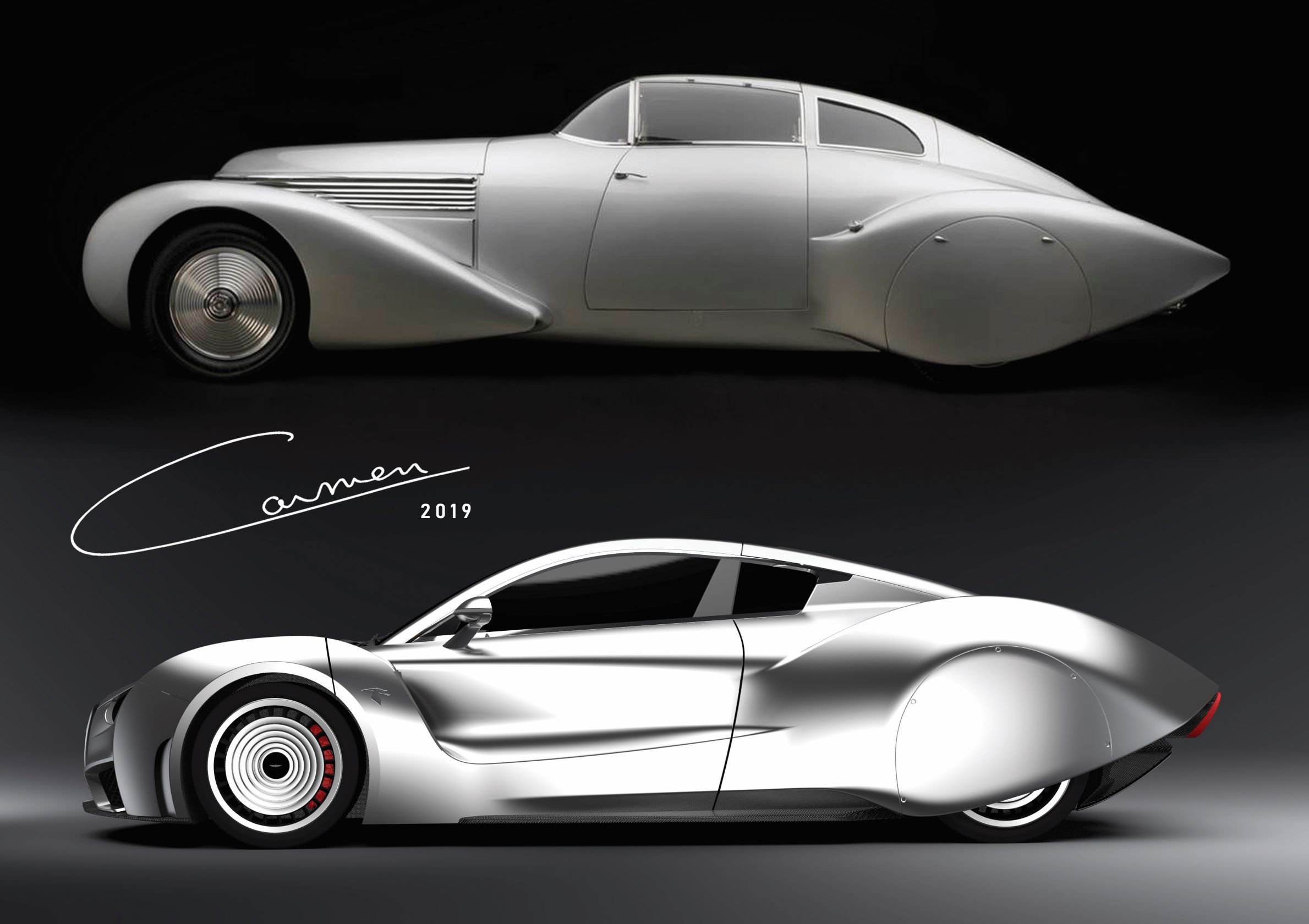
The future comes from its cutting-edge 80-kWh electric platform bristling with 1,000-plus horsepower—a high-capacity, water-pump cooled four-motor system, all mounted on the rear axle, that catapults the Carmen from 0-62 mph in just 2.6 seconds.
While their boasts of “Best Electric Platform In The World” may seem premature given the brand’s newcomer status, consider the powertrain was developed by QEV Technologies—winners of the very first Formula E Drivers’ Title with Nelson Piquet Jr. driving the Team China car in 2015.
Meaning while the Carmen may be new, its powertrain has been tested and forged under the daunting gauntlet of EV racing’s apex series, birthing Hispano-Suiza’s From Race to Road ethos.
“With the knowledge gained in Formula E, we’ve designed a software capable of controlling the torque supplied to each motor and have an exhaustive electrical control of the entire system, and thus regulate the power that reaches each wheel,” Hispano-Suiza CTO Joan Orus says of his 1,160-Nm of torque platform, which also boasts a Formula E suspension setup.
“Our great challenge was to accurately design the entire electrical architecture of the vehicle and its management software in order to offer a vehicle to suit our customers with maximum performance and efficiency.”
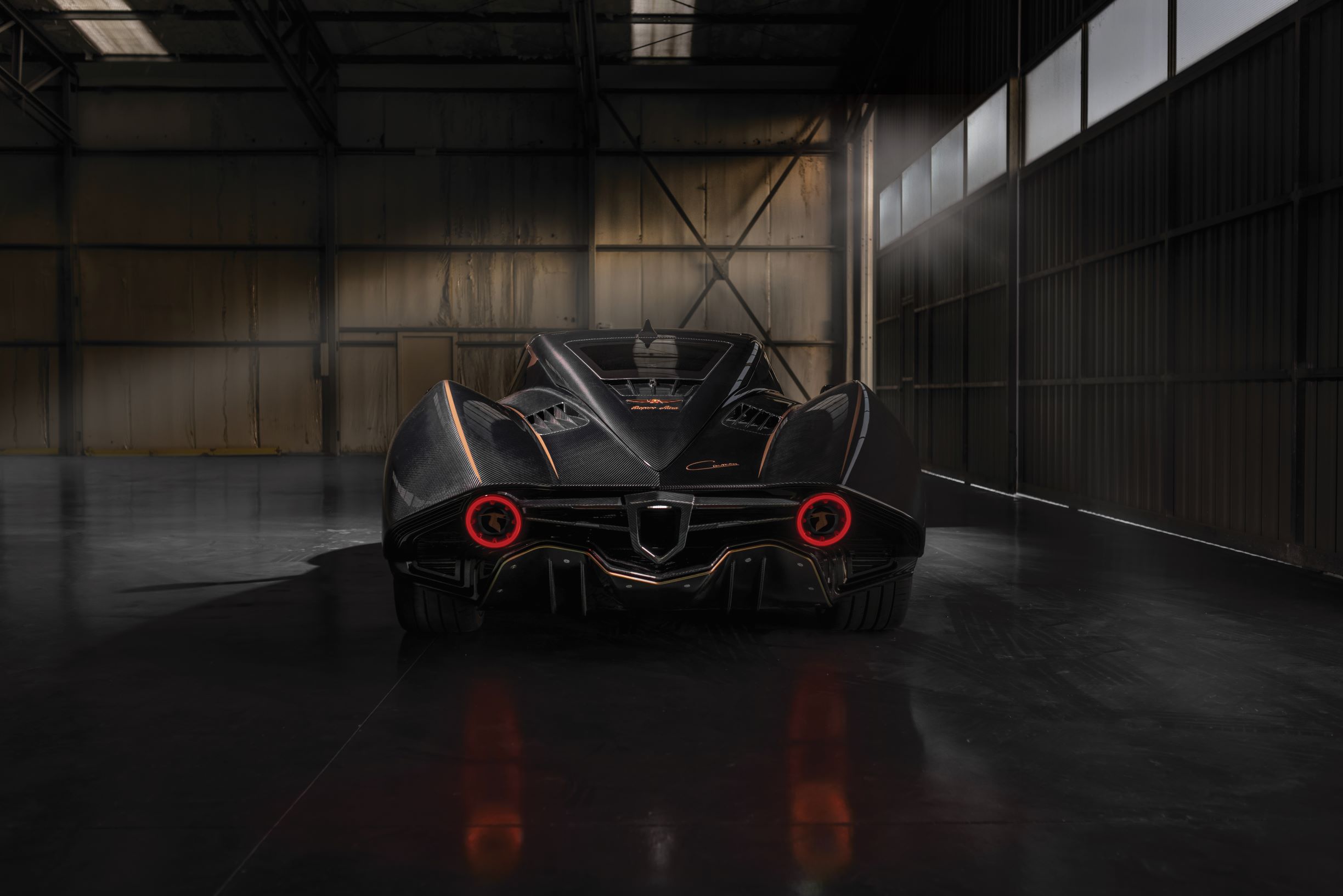
This performance elevates another notch with the even more exclusive Carmen Boulogne. With an exterior molded entirely from carbon fiber, and its powertrain boosted to 1,114-hp, the Boulogne boasts an unheard of 1.5 kg/hp—a power-to-weight ratio only seen by the Koenigseggs and Aston Martin Valkyries of the world.
Personalization is also a critical element of the brand’s DNA: no two Hispano-Suizas will be exactly the same. Utilizing their proprietary Unique Tailormade customization program, a client can configure a panoply of options, both exterior and interior, with state-of-the-art materials and meticulous attention to the buyer’s wishes. In all the Carmen offers 1,904 unique personalization combinations to make each into “a work of art.”
“With the market of supercars they are sporty but not luxury, and then hypercars have luxury but are not very sporty,” argues CEO Sergio Martínez Campos. “For Hispano-Suiza our plan was to create the luxury sports car that is what we call hyperlux.”
Campos believes this rare combination of power (1,100-hp) with absurd customization potential makes the Spanish brand unique in the market, and points out customers’ reactions at their debut in Geneva in 2019. “For us the history, comfort, exclusivity, handmade crafts-DNA.”
https://www.instagram.com/p/CQtx9DdL2Z7
Only 19 Carmens are to be developed and built entirely in Spain, and even fewer of the Boulognes, maxed out at five. With celestial price tags to match—about $2-million each, plus an additional $120,000 for the Boulogne edition—the exclusivity is real. But the team behind Hispano-Suiza know the rich Iberian heritage they have been handed, and realize that comes with the loftiest of expectations.
“The process has been intense and exciting, because very few brands can boast of a history like ours: 117 years of legacy, tradition and values that must be maintained and updated,” notes Hispano-Suiza designer Arenas.
“On the other hand, all this is subjected to the watchful eye of our president, Mr. Miguel Suqué, direct descendant of Mr. Damián Mateu, founder of the brand in 1904. This direct relationship with the presidency translates into something similar to a continuous audit of our work, which assures us that we are following the correct line.”
